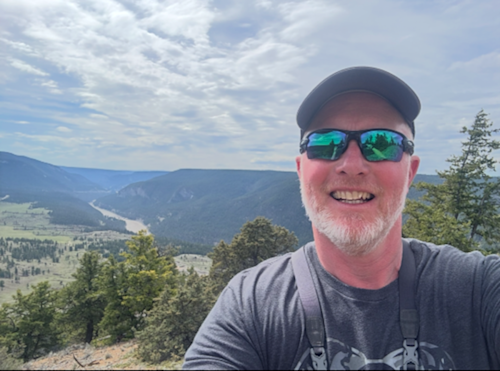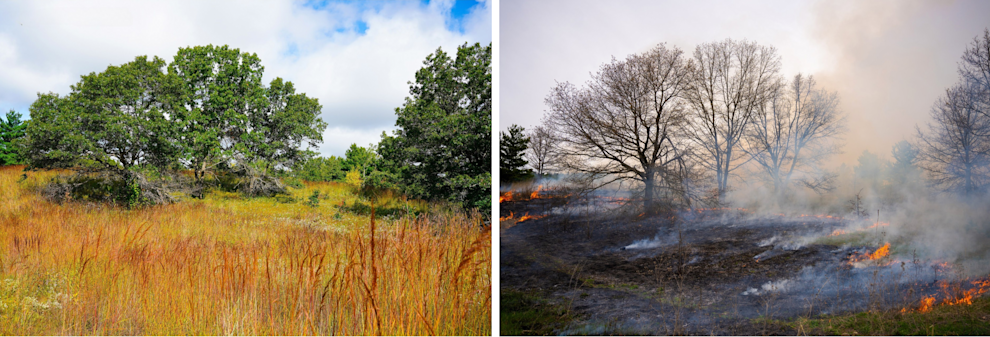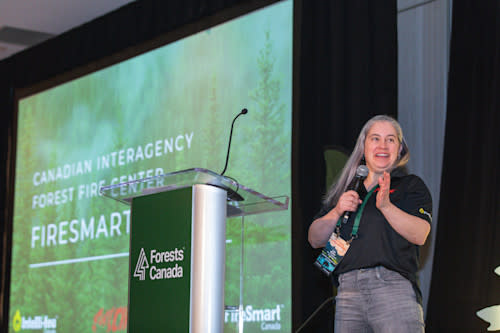Trees Company Blog
After the Smoke Clears: Forest recovery post-wildfire requires mix of resilience and adaptation
Posted: 2025.06.03
Trees Company Blog
Posted: 2025.06.03
By Thomas Haney
Wildfires are an ancient force of nature that have shaped ecosystems since time immemorial and, in many cases, sustained them. Likewise, First Nations have practised cultural burning for millennia to maintain healthy forests. Fire in the landscape is as natural as the forest itself.
In 2023, however, Canada experienced the worst wildfire season on record, with 15 million hectares burned – seven times the historical average. Wildfires are growing more frequent and severe, forests are struggling, and communities face growing fire risks. Climate change has upended traditional approaches to tree planting and fire management, calling for new adaptation strategies.
Two recent events focused on this complex challenge: Reforest Canada Collective’s (RCC) webinar series, After the Smoke Clears, and FireSmart Canada’s presentation at Forests Canada’s annual conference earlier this year. While the RCC’s webinars focused on restoring forests, FireSmart emphasized protecting communities. Together, they painted a clear picture: successful wildfire recovery requires a combined approach - building resilient forests and creating fire-adapted communities.
Key Insights from the RCC Webinar Series
The RCC, led by non-profit charity Forests Canada, has a goal of bringing together the planting community to improve collaboration, relationship-building and knowledge sharing. Fresh off its launch in December 2024, the RCC wasted no time assembling forestry experts and practitioners across Canada to broach the issue of post-wildfire recovery. In early 2025, the RCC undertook its first initiative – a three-part webinar series entitled After the Smoke Clears.
Spearheaded by Forests Canada’s Tree Planting Resource Manager, Amber Brant, and facilitated by the charity’s Director of Restoration Programs, Val Deziel, the series featured nine forestry experts from across Canada who discussed the science, logistics, and future of post-wildfire tree planting.
Although strides are being made in reforestation, speakers acknowledged that many knowledge gaps remain – particularly around predicting regeneration failure, selecting species for future climate conditions, and understanding how restoration actions influence future fire behaviour. Hence the importance of forums that assemble experts nationwide to share insights and best practices.
Here are five takeaways from the series:
Wildfires are intensifying and changing the landscape.
Fires are growing more frequent and severe and are occurring earlier in the season and in historically low-burn areas. The consequences of these shifting dynamics are profound. There was consensus among speakers that regeneration processes are being disrupted and seedbanks destroyed. Species like Black Spruce are failing to regenerate after high-severity burns, and human intervention is therefore often necessary.
Restoration must be adaptive and site-specific
Restoration strategies vary depending on ecological context, burn severity, accessibility, and community priorities. What works in British Columbia to recover a burned landscape may not apply in Alberta. In some cases, the best restoration decision may involve doing nothing and letting nature take its course.
Species selection and planting techniques are evolving
Species selection is evolving based on shifting wildfire regimes. For instance, British Columbia’s Williams Lake First Nation has experimented with planting Ponderosa Pine instead of White Spruce, given the former’s ability to withstand fire and drought and the latter’s shifting distribution due to climate change.
Other shifting approaches include adding more deciduous trees, including Trembling Aspen and alder, to planting prescriptions and exploring the possibility of using larger, deeper-rooted stock. As speaker Jordan Todd of Folklore Contracting noted during his presentation, some nurseries are experimenting with niche stock, including different plug sizes with longer, more developed root systems to help seedlings become established in drought-prone areas.
Operational challenges and knowledge gaps persist
Burnt landscapes present barriers to restoration – including dangerous terrain, standing dead trees, and smoke - that require specialized training. Many restoration efforts lack long-term data, and more research is needed on survival rates, soil recovery, and firebreak effectiveness.
The discussions also touched on wildfire and its unknown impacts on wildlife and biodiversity. For instance, what happens when fires increase water temperatures and decrease oxygen levels in lakes and rivers?
Wildfire and cultural values must be integrated
Central to the webinar series was the question of Indigenous-led restoration strategies, such as cultural burning and Traditional Ecological Knowledge, and how they can be integrated into post-wildfire forest management.
“If we aren’t proactive in restoring the ecosystems to how First Nations historically managed these areas, there will be nothing to prevent the catastrophic fires,” John Walker, Stewardship Forester with British Columbia’s Williams Lake First Nation, says.

For thousands of years, Indigenous communities have used fire as a land management tool – restoring grasslands, maintaining biodiversity, and preventing fuel buildup that leads to uncontrollable wildfires.
However, in the wake of colonization and fire suppression policies, as Walker noted, these traditional practices were marginalized, contributing to today’s volatile conditions.
Walker has been involved in the community’s recovery efforts in the wake of the 2017 mega-fire that forced the City of Williams Lake, British Columbia, to evacuate. His approach is rooted in consultation with Elders, walking the land, and applying cultural insight to restoration planning. The community’s plan includes preserving areas of natural regeneration, creating wildlife corridors with gaps to act as firebreaks, and restoring grasslands through fire.
In 2025, the First Nation plans to plant 300,000 trees, including Douglas Fir, Lodgepole Pine, and Ponderosa Pine. The species were selected to align with Traditional Knowledge, future climate conditions, and wildfire resilience.
Incorporating Indigenous knowledge into wildfire recovery is not simply a matter of restoring ecosystems – it’s a step towards reconciliation and long-term resilience. “Only by listening to the land, as First Nations have done for millennia, can proper management be completed pre- and post-fire,” Walker added.

FireSmart Canada: Building Resilient Communities
Attendees at Forest Canada’s The Forest Conference in February 2025, heard a presentation from Lisa Walker, Director of Resiliency and Partnerships at the Canadian Interagency Forest Fire Centre (CIFFC), a non-profit corporation whose mission includes providing operational support to member agencies and coordinating fire prevention and mitigation across Canada.
Walker spoke about FireSmart, one of CIFFC’s national programs that helps Canadians increase neighbourhood resilience to wildfire and mitigate its impacts. She noted that longer fire seasons and drier conditions have expanded the wildland–urban interface, making more communities vulnerable to fire than ever before: “With our changing climate, the threat of wildland fire has increased significantly across Canada,” Walker says. “The good news is that there are actions we can take to reduce our shared risk and create more fire resilient communities!”
She emphasized that the danger often isn’t the flames themselves but windblown embers. As a result, homes with non-combustible roofs and 1.5 metres of non-combustible clearance are much likelier to survive a major wildland fire.
Walker highlighted strategies that homeowners can use to mitigate fire risk, such as reducing flammable materials near homes, using fire-resistant landscaping, and educating communities on emergency preparedness and evacuation planning.
Although large-scale forest management plays a crucial role in wildfire prevention, Walker adds that homeowners and communities can influence outcomes at the neighbourhood level.

In conclusion, the message from both events was clear: wildfire recovery must go beyond planting trees. It is a complex, climate-informed, culturally grounded process that requires long-term vision, science, and deeper engagement with Indigenous-led practices.
As one presenter noted, “We’re still students of this process.” Success depends on our willingness to learn from every burn, collaborate across knowledge systems and communities, and adapt as climate and fire regimes evolve.
The full webinar series can be viewed in English and French on the RCC website: reforestcollective.ca/knowledge-hub
For more information and FiresSmart resources: firesmartcanada.ca
With support through Canada’s 2 Billion Trees program, the Reforest Canada Collective works to increase the scale and quality of tree planting and forest restoration projects in Canada by addressing current and anticipated challenges related to access to information, best practices, training, regional and sectoral capacity gaps, and navigating the impacts of climate change.